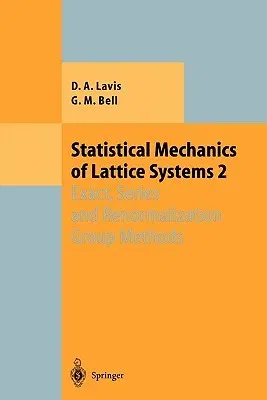Most of the interesting and difficult problems in statistical mechanics
arise when the constituent particles of the system interact with each
other with pair or multipartiele energies. The types of behaviour which
occur in systems because of these interactions are referred to as
cooperative phenomena giving rise in many cases to phase transitions.
This book and its companion volume (Lavis and Bell 1999, referred to in
the text simply as Volume 1) are princi- pally concerned with phase
transitions in lattice systems. Due mainly to the insights gained from
scaling theory and renormalization group methods, this subject has
developed very rapidly over the last thirty years. ' In our choice of
topics we have tried to present a good range of fundamental theory and
of applications, some of which reflect our own interests. A broad
division of material can be made between exact results and ap-
proximation methods. We have found it appropriate to inelude some of our
discussion of exact results in this volume and some in Volume 1. Apart
from this much of the discussion in Volume 1 is concerned with
mean-field theory. Although this is known not to give reliable results
elose to a critical region, it often provides a good qualitative picture
for phase diagrams as a whole. For complicated systems some kind of
mean-field method is often the only tractable method available. In this
volume our main concern is with scaling theory, algebraic methods and
the renormalization group.


